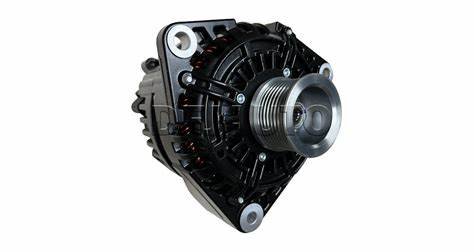Alternators: The Heart Of Your Vehicle’s Electrical System Explained
Have you ever wondered what keeps your car’s battery charged and its electrical systems running smoothly? Meet the alternator—an essential component that powers everything from your headlights to your stereo system. But how does this critical part work, and why is it so vital to vehicle performance? In this comprehensive guide, we’ll explore what an alternator does, how it works, signs of failure, and how to maintain it for optimal performance.

What Is an Alternator?
An alternator is a device in a vehicle’s engine that generates electrical power to charge the battery and power the electrical systems while the engine is running. It converts mechanical energy from the engine into electrical energy, ensuring a continuous power supply.
Key Components of an Alternator:
- Rotor and Stator: Work together to generate electricity through electromagnetic induction.
- Voltage Regulator: Controls the output voltage, preventing overcharging.
- Diode Rectifier: Converts AC power to DC power suitable for the battery.
- Cooling Fan: Prevents overheating during operation.
How Does an Alternator Work
- Mechanical Energy Generation: The engine drives a belt connected to the alternator pulley.
- Electromagnetic Induction: The rotor spins within the stator, creating a magnetic field that generates AC electricity.
- AC to DC Conversion: The diode rectifier converts AC into usable DC electricity.
- Battery Charging: The voltage regulator ensures consistent power flow to the battery and electrical systems.
Why Is the Alternator Important?
- Battery Charging: Prevents the battery from depleting during operation.
- Electrical Component Power: Supports lights, wipers, sensors, and infotainment systems.
- Engine Efficiency: Ensures proper ignition and fuel delivery systems function.
Signs of a Failing Alternator
- Dim or Flickering Headlights: Reduced power supply to the lighting system.
- Warning Light Activation: Battery warning light may illuminate.
- Difficulty Starting: Battery drain due to insufficient charging.
- Unusual Noises: Grinding or whining sounds may indicate bearing issues.
- Dead Battery: Continuous power drain without proper recharging.
How to Test an Alternator
- Multimeter Test: Measure voltage output (ideal range: 13.8 to 14.2 volts).
- Battery Test: Check battery charge levels and stability.
- Professional Inspection: For detailed diagnostic analysis.
Maintenance Tips for Longevity
- Inspect Belts Regularly: Ensure the serpentine belt is tensioned properly.
- Clean Battery Terminals: Prevent corrosion affecting the charging system.
- Monitor Electrical Loads: Avoid overloading the alternator with excess accessories.
- Use Quality Parts: Invest in high-quality alternators and components.
Conclusion
The alternator plays a critical role in keeping your vehicle’s electrical systems running efficiently. By understanding its functions and warning signs of failure, you can prevent unexpected breakdowns and costly repairs. Regular maintenance and timely replacements can ensure your car stays powered for every journey.
Alternators: The Heart Of Your Vehicle’s Electrical System Explained





